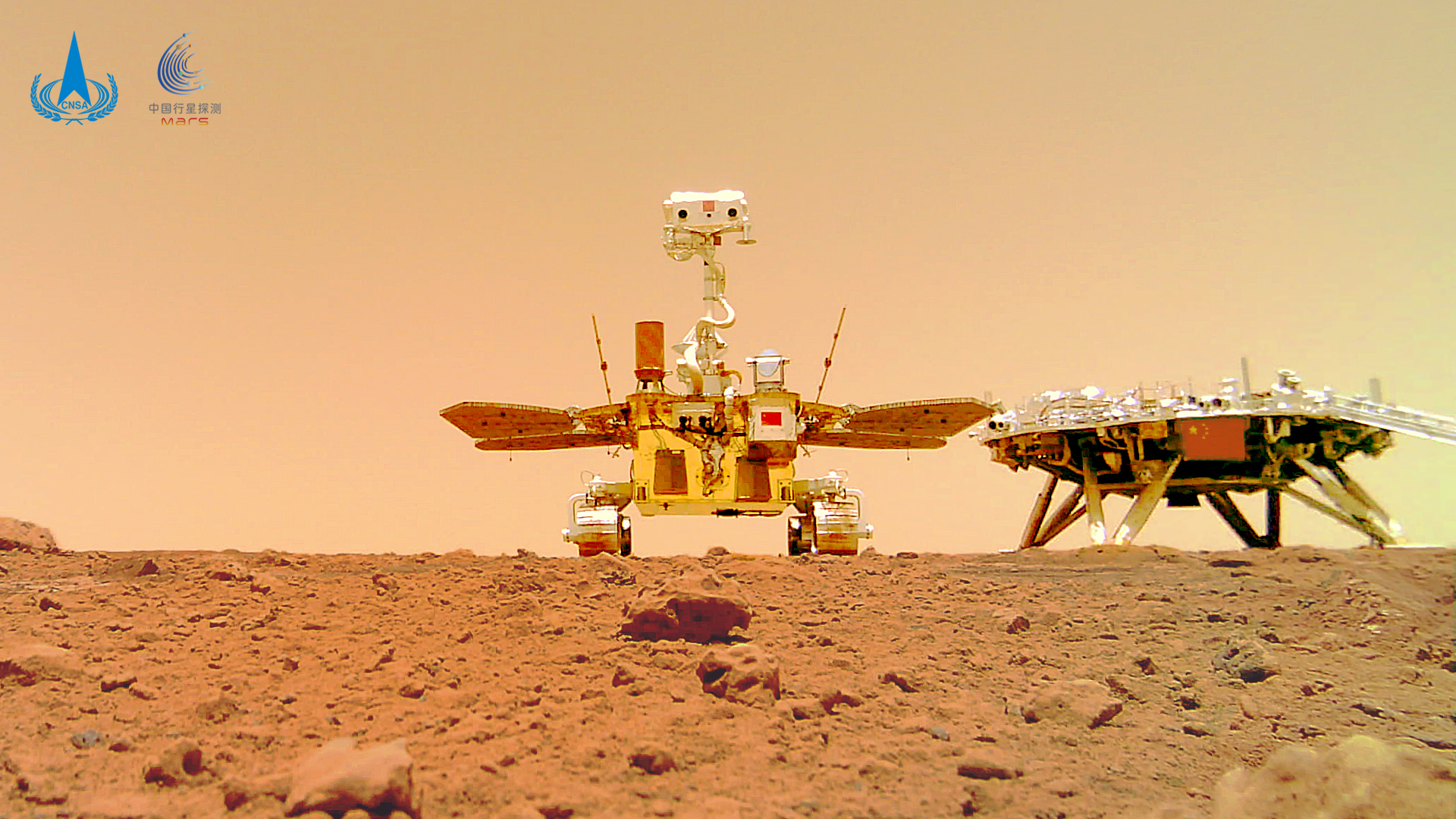Chinese scientists build model Mars atmosphere to aid sample-return plans
China aims to launch its Mars sample-return mission in the 2028-2030 timeframe.

Chinese scientists have constructed a numerical model to simulate the Martian atmosphere and thus assist the country's plans to collect rock samples from the Red Planet.
The model replicates the cycles of dust, water and carbon dioxide in Mars' atmosphere. It will be used to simulate meteorological conditions for landing spacecraft, including surface temperature, wind and dust. The study was recently published in the journal Chinese Science Bulletin.
China plans to launch its Tianwen-3 Mars sample return mission between 2028 and 2030, according to earlier reports. A lander will collect up to 1.1 pounds (500 grams) of Martian material using a drill and a robotic arm. An ascent vehicle will then blast the precious cargo back into Mars orbit, to meet up with an awaiting orbiter for the long journey home.
Related: Mars: Everything you need to know about the Red Planet
The new atmospheric model "can simulate the temperatures of the landing zone, and scientists can use these data to design materials that are suitable for building Mars rovers to cope with extreme cold," lead researcher Wang Bin said, according to China's state-run Xinhua media outlet.
The model — the Global Open Planetary atmospheric model for Mars, or GoMars — was built using data from China's now-defunct Mars rover Zhurong, NASA's Viking 1 and 2 landers, and the OpenMARS reanalysis dataset, a global record of Martian weather.
Zhurong was part of China's first interplanetary mission, Tianwen-1, which launched in 2020 and also included a Mars orbiter. Tianwen-2, slated to launch in early 2025, will visit a near-Earth asteroid and a main belt comet, while Tianwen-3 will sample Mars.
Breaking space news, the latest updates on rocket launches, skywatching events and more!
Tianwen-4, due to launch around 2030, will head for Jupiter and its moon Callisto, while also separating from a probe that will make a flyby of Uranus.

Andrew is a freelance space journalist with a focus on reporting on China's rapidly growing space sector. He began writing for Space.com in 2019 and writes for SpaceNews, IEEE Spectrum, National Geographic, Sky & Telescope, New Scientist and others. Andrew first caught the space bug when, as a youngster, he saw Voyager images of other worlds in our solar system for the first time. Away from space, Andrew enjoys trail running in the forests of Finland. You can follow him on Twitter @AJ_FI.
